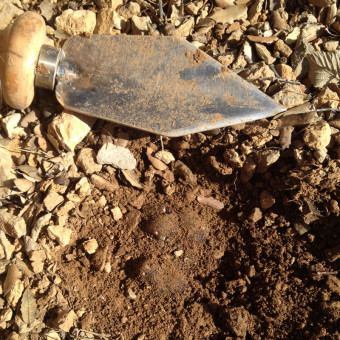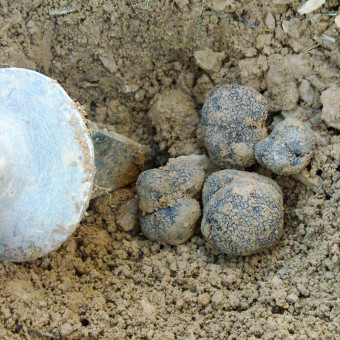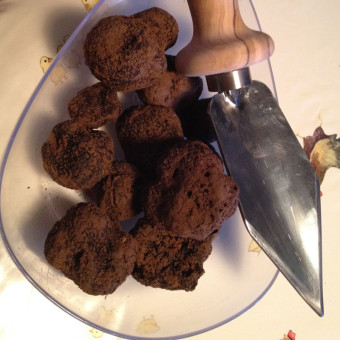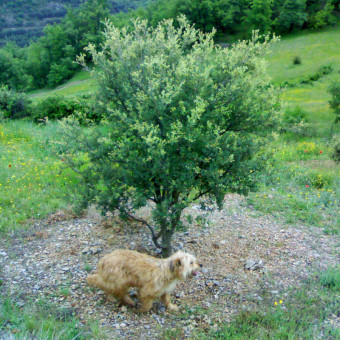A truffle is a fungus, which has the particularity that breeds its fructifying bodies buried down in the ground, unlike most fungi which breed on the surface (everyone knows or has seen a mushroom). Truffles grow then buried in the ground, usually between 5 and 20 cm deep. To survive, this fungus needs to merge with the roots of certain trees (mostly oaks and holm oak, but can also do it with hazelnut trees and kermes oak).
A very characteristic symptom of truffle-producing trees is that there is an area around the tree where the grass does not grow. This is due to the truffle fungus, which prevents its growth. This area is called “baked” because is similar to areas with no vegetation.
The truffle is a completely natural, exquisite product, greatly valued in haute cuisine, but it can be also enjoyed with minimal kitchen preparation in any home. Brillat-Savarin, the famous French gastronome and writer, called it the kitchen’s black diamond.
Truffles have been enjoyed and consumed since the ancient times. The Greeks and Romans attributed them an aphrodisiac power. They said that they made women tender and men warmer.
The black truffle (Tuber melanosporum) requires specific climate and soil conditions in order to survive, and that only occurs in a limited number of countries. Truffles grow naturally mainly in Spain, France and Italy. That’s why it is such a highly-valued product, because a limited production must satisfy a growing global demand.




